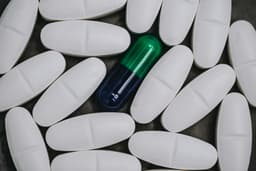Bringing a new life into the world is supposed to be joyous, but what if you’re feeling overwhelmed instead?
You’re not alone, 1 in 7 new moms experience postpartum depression (PPD), a condition that goes beyond the typical ‘baby blues.’ Unlike temporary mood swings that fade in weeks, PPD can trap you in sadness, guilt, or exhaustion, making it hard to bond with your baby.
This guide breaks down the symptoms of postpartum depression, its hidden causes, and treatment options that work. Whether you’re a new mom, partner, or supporter, you’ll learn how to spot the signs and take action.
Struggling right now? Talk to a PPD specialist today for judgment-free help.
Let’s get started.
What is Postpartum Depression?
Postpartum depression (PPD) is a clinically diagnosed mood disorder that can develop after childbirth, characterized by persistent feelings of sadness, hopelessness, and emotional detachment.
Unlike temporary “baby blues,” PPD is a medical condition that interferes with daily functioning and requires professional intervention.
Postpartum depression (PPD) isn’t just “feeling sad” after childbirth. It’s a serious mental health condition that affects your emotions, thoughts, and ability to function. While the “baby blues” fade quickly, PPD lingers—like a heavy fog that won’t lift.
Let’s break down how to spot the difference and understand other related mood disorders.
PPD vs. Baby Blues: How to Tell the Difference
Baby Blues
- Short-term: Lasts 1–2 weeks after delivery.
- Symptoms: Mood swings, tearfulness, irritability.
- Cause: Hormone shifts + adjustment to parenthood.
Postpartum Depression
- Longer & more severe: Symptoms persist for weeks or months.
- Key signs: Hopelessness, rage, thoughts of self-harm, detachment from your baby.
- Cause: A mix of hormones, stress, and biology.
Types of Postpartum Mood Disorders
1. Postpartum Anxiety
Excessive worry, restlessness, or physical symptoms (e.g., rapid heartbeat) unrelated to logical triggers.
2. Postpartum Obsessive-Compulsive Disorder (OCD)
Intrusive, repetitive thoughts about harm coming to the baby, paired with compulsive behaviors to mitigate fears.
3. Postpartum Psychosis
A rare, acute condition marked by hallucinations, delusions, or disorganized thinking. This is a psychiatric emergency requiring immediate care.
Clinical Insight
PPD is not a personal failure but a treatable medical condition. Research suggests hormonal fluctuations (e.g., drops in estrogen and progesterone) interact with genetic predispositions and psychosocial stressors (e.g., lack of support) to trigger symptoms.
Postpartum Depression Symptoms
Recognizing postpartum depression starts with understanding its symptoms, which go beyond “feeling sad.” PPD affects your mind, body, and behavior, often creating a cycle that feels impossible to escape.
Let’s break down the key signs so you can identify them early.
Emotional & Mental Signs
- Persistent sadness or numbness: You might cry frequently or feel “empty,” even during happy moments.
- Intense guilt or worthlessness: Thoughts like “I’m a bad mother” or “My baby deserves better” become overwhelming.
- Anger or irritability: Small frustrations (e.g., a crying baby) trigger disproportionate rage.
- Loss of interest: Activities you once loved—like hobbies or time with friends—feel meaningless.
- Intrusive thoughts: Fears about accidentally harming your baby or vivid, unwanted mental images.
Physical Symptoms
- Extreme fatigue: Even after sleeping, you feel bone-deep exhaustion.
- Appetite changes: Eating too little or overeating for comfort.
- Insomnia or oversleeping: Trouble falling asleep (even when the baby is resting) or sleeping excessively.
- Unexplained aches: Headaches, stomachaches, or muscle pain with no clear cause.
Behavioral Red Flags
- Avoiding the baby: You feel disconnected or reluctant to hold, feed, or care for your infant.
- Withdrawing socially: Canceling plans with friends or skipping family gatherings.
- Neglecting self-care: Forgetting meals, showers, or basic hygiene.
- Risky coping mechanisms: Overusing alcohol, drugs, or compulsive behaviors to numb emotions.
If these symptoms sound familiar, you don’t have to fight alone. Connect with a licensed PPD therapist who can help you navigate this safely.
What Causes Postpartum Depression?
Postpartum depression isn’t caused by a single factor—it’s a perfect storm of biological, emotional, and environmental triggers. Understanding these root causes helps you see PPD as a medical condition, not a personal failing. Let’s explore what science tells us.
Biological Factors
- Hormone crashes: After childbirth, estrogen and progesterone levels drop sharply—a shift linked to mood regulation issues.
- Thyroid dysfunction: Low thyroid hormones (common postpartum) can mimic depression symptoms like fatigue and weight gain.
- Brain chemistry changes: Reduced serotonin and dopamine levels disrupt emotional stability.
- Genetic vulnerability: A family history of depression or PPD raises your risk by 30–50%.
Psychological Triggers
- Birth trauma: A traumatic delivery (e.g., emergency C-section, NICU stay) can trigger feelings of helplessness.
- Previous mental health struggles: Anxiety, depression, or OCD before pregnancy increase PPD likelihood.
- Unrealistic expectations: Pressure to be a “perfect mom” clashes with the messy reality of parenthood.
Lifestyle & Environmental Risks
- Lack of support: Isolation or inadequate help with childcare/household tasks.
- Financial stress: Worries about medical bills, lost income, or parental leave.
- Sleep deprivation: Chronic exhaustion disrupts emotional resilience.
- Relationship strain: Conflict with a partner or family members.
PPD risk factors are like layers in a cake—hormones are the base, but stress, trauma, and isolation add layers until the “cake” becomes too heavy to carry.
Who’s at Risk for Postpartum Depression?
While postpartum depression can affect any new parent, certain factors increase vulnerability. Think of PPD risk like stacking blocks: each stressor adds weight, and too many can tip the scales. Let’s explore common and lesser-known risks so you can take proactive steps.
Common Risk Factors
- History of mental health issues: Prior depression, anxiety, or PMDD raises risk by 30–50%.
- Traumatic pregnancy or birth: Complications, preterm delivery, or NICU stays.
- Weak support system: Isolation, lack of family help, or partner conflict.
- Financial strain: Job loss, unpaid leave, or medical debt.
- Sleep deprivation: Chronic exhaustion weakens emotional resilience.
According to the Mayo Clinic, hormonal shifts and genetic predispositions further amplify these risks.
Surprising Contributors
- Partners can develop PPD too: 1 in 10 new fathers and 4% of non-birthing partners experience symptoms, often overlooked due to stigma.
- Age extremes: Teen moms and mothers over 35 face higher risks.
- Unplanned pregnancy: Emotional ambivalence can linger postpartum.
- Baby’s health challenges: Colic, feeding issues, or developmental concerns.
How is Postpartum Depression Treated?
The good news? Postpartum depression is highly treatable with the right support. From therapy to lifestyle adjustments, here’s a breakdown of proven options that help you heal and reconnect with your life and baby.
Therapy Options
- Cognitive Behavioral Therapy (CBT): Identifies and reframes negative thought patterns (e.g., “I’m failing as a mom”) into balanced perspectives.
- Interpersonal Therapy (IPT): Focuses on improving relationships and communication to reduce isolation.
- Group Therapy: Connect with other moms facing PPD in safe, moderated sessions. Example: Online support groups for flexible participation.
- Online Counseling: Accessible, judgment-free sessions from home—ideal for busy or isolated parents.
Research shows therapy reduces PPD symptoms in 70% of cases when started early.
Medications Safe for Breastfeeding
- SSRIs: First-line antidepressants with minimal transfer to breast milk.
- SNRIs: Effective for combined anxiety and depression.
- Hormone Therapy: Estrogen patches may help stabilize mood in some cases (under strict medical supervision).
Safety Note
The American Academy of Pediatrics classifies most SSRIs as low-risk for breastfeeding infants. Always consult your provider to weigh benefits vs. risks.
Lifestyle Changes That Help
- Sleep Prioritization: Trade nighttime duties with a partner or hire help for 4–6 hours of uninterrupted sleep.
- Nutrition Adjustments: Omega-3s (salmon, walnuts), iron-rich foods (spinach, lentils), and hydration stabilize mood.
- Movement: Daily 10-minute walks or postpartum yoga release endorphins.
- Support Systems: Delegate chores, join mom groups, or use meal delivery services.
Quick Tip: Sunlight exposure boosts serotonin—try sitting near a window for 15 minutes daily.
Treatment works best when tailored to your needs. Book a consultation with a PPD specialist to create your personalized recovery plan.
How to Support Someone with Postpartum Depression
Supporting a loved one with PPD isn’t about “fixing” them—it’s about offering practical help, empathy, and patience. Here’s how to be their anchor without burning yourself out.
Practical Ways to Help
1. Handle daily tasks
Cook freezer-friendly meals, clean their kitchen, or run errands.
Offer to watch the baby while they shower, nap, or take a walk alone.
2. Listen without judgment
Say: “I’m here. Tell me what this feels like.” Avoid jumping to solutions.
3. Track their symptoms
Help them use a mood journal or app to share updates with their doctor.
4. Research local resources
Find therapists, support groups, or postpartum doulas in their area.
Tip: Set up a “support schedule” with friends/family to ensure consistent help.
You Can Overcome Postpartum Depression
Postpartum depression isn’t a life sentence—it’s a temporary storm you can weather with the right tools. Let’s recap what matters most:
- PPD is not your fault: It’s a medical condition with biological, emotional, and environmental roots.
- Symptoms are treatable: Therapy, medication, and lifestyle changes help 90% of moms recover.
- Support saves lives: Whether it’s a partner, therapist, or online group, leaning on others speeds healing.
You deserve to feel like yourself again. Start online counseling today with a licensed PPD specialist who understands your journey.
Every journey through PPD is unique, but one truth remains: Asking for help is strength, not weakness. You’ve already taken the first step by reading this guide—now take the next one.




